Wonder
Paramo El Angel – eerie land of frailejones
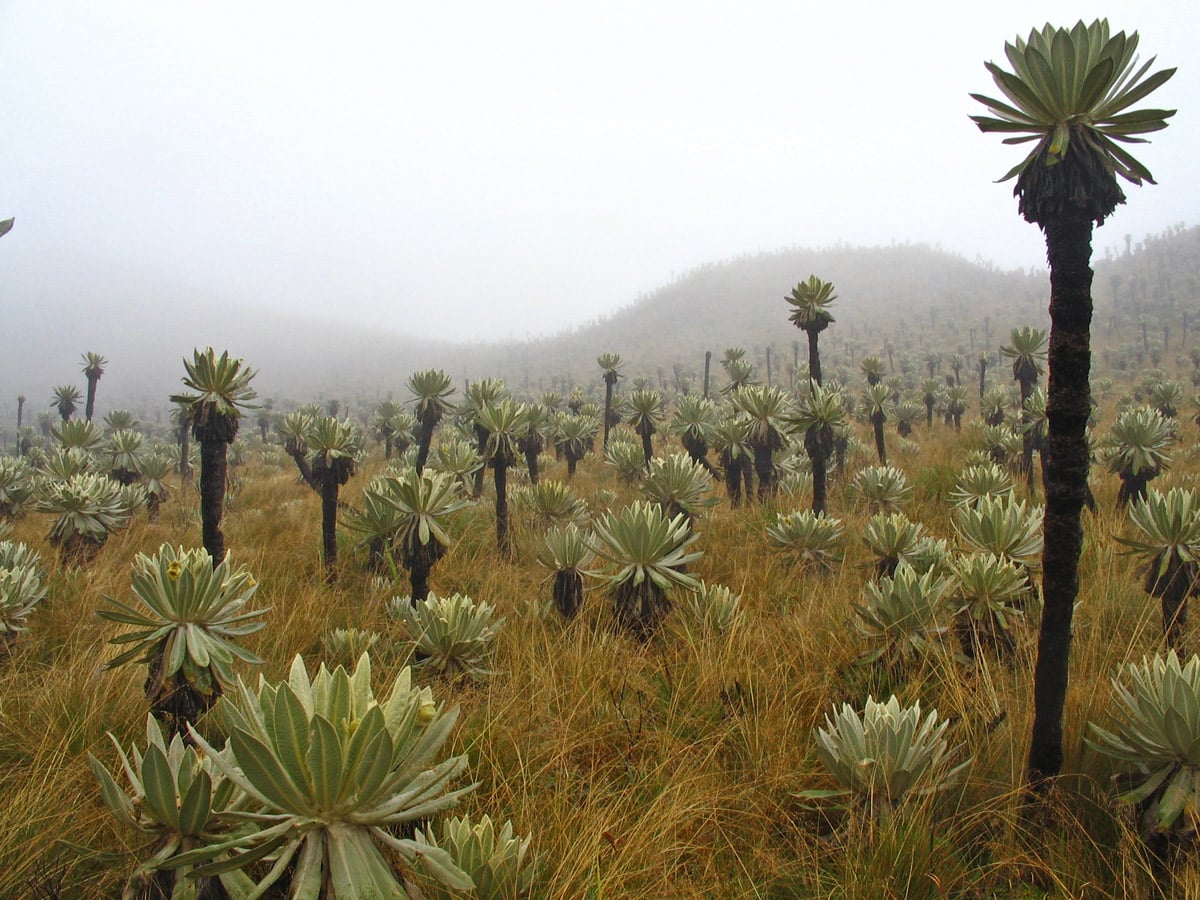
 In short
In short
In the highlands of tropics in several locations of the world have formed unique montane moors with eerie, tall plants. Páramo El Ángel in Ecuador is characteristic example of such ecosystems – here thousands of frailejones are rising up to 10 m tall.
 43.3%
43.3%
GPS coordinates
Location, address
Dominant species
Area
Map of the site
If you see this after your page is loaded completely, leafletJS files are missing.
 In detail
In detail
Ecological reserve
The unique ecosystems of the mountain saddles south from Chiles volcano (4,723 m) are protected since 1992 when here was established Reserva Ecológica El Ángel (area 15,715 ha). It includes diverse montane biotopes, such as the unique Polylepis forest and diverse types of meadows and moorlands – páramos.
Páramos
Páramos are characteristic highland moors in the northern Andes. These ecosystems have formed in highland plateaus and saddles between the mountains above the tree line (in Páramo El Ángel – above 3,100 – 3,400 m).
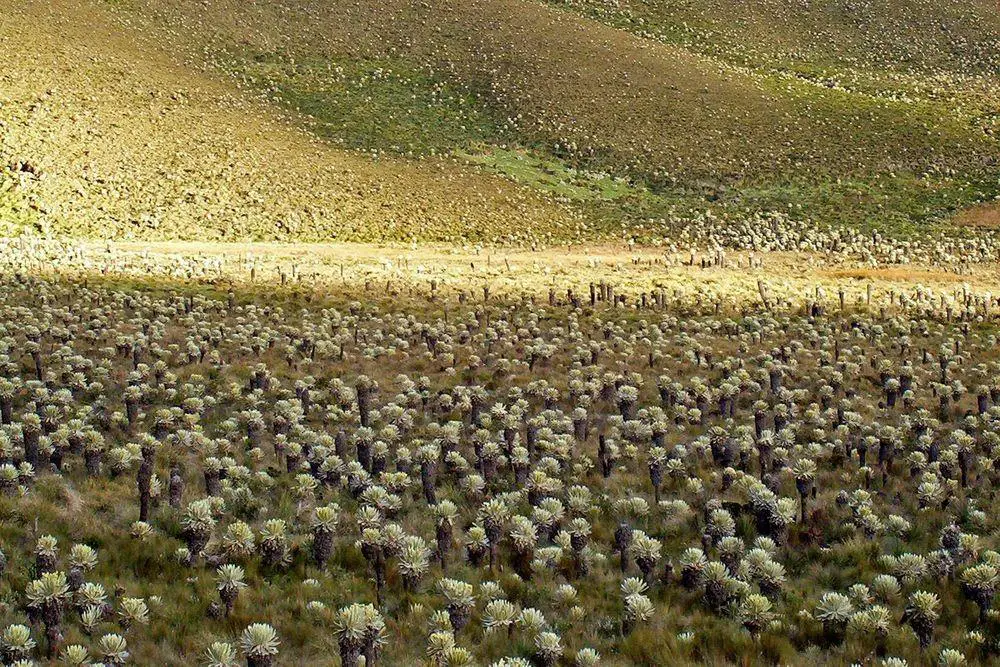
The climate here is moist – the warmed air mases from the Pacific become cold here and the moisture precipitates on the mountains. For most time of the year these highland meadows are shrouded in fog.
Most páramos are located in Columbia, many are found also in Ecuador and Venezuela, as well as in northern Peru, in Panama, Costa Rica and Guatemala.
Harsh weather
The life in páramos is not easy – there are few nutrients (such as phosphorus) in the soil, soil is acidoc. The soil and the air is cold.
In Páramo El Ángel throughout the year the temperature falls below zero in the nights – although it is only 80 km from the equator. In summer months (June – September) days can be warm – up to 18 ° C, but in the winter even in daytime the temperature is around 0 ° C. Strong and chilly winds are very common.
Due to the cold weather organic remnants in páramos do not decompose – they accumulate. The moist climate turns this all into a soaked sponge.
Unique ecosystem
In these harsh conditions has developed very special ecosystem. Species diversity here is much higher than in the temperate moorlands of the world – but much lower than in the nearby tropical rainforests.
In the páramos of Ecuador grow some 1,500 species of plants. Approximately 60% of these plants grow ONLY on páramos.
Plants here have developed specific methods to protect themselves from the frost. One method is – growing in rosettes, thus the wind can not chill the centre of the plant. Many plants have developed very soft, "plumy" leaves and flowers. The old leaves do not fall off – they enclose the stem and allow development of new roots along the stem.
Thus each plant manages to keep the temperature of its stem above zero even in strong, chilly winds.
Páramos de frailejones
Scientists have divided páramos in several (six and more) types. Visually the most exotic is páramo de frailejones – a páramo dominated (at least visually) by thousands of tall frailejones – plants belonging to genus Espeletia. In total in this genus are some 45 – 130 species, all growing in the Andes of Colombia, Venezuela and Ecuador.
These countless frailejones are the only tall plants of these ecosystems – except for occasional and not less exotic Puyas.
In Páramo El Ángel the stands of frailejones have formed in the height of 3,100 – 4,500 m. These stands are formed of single species – Espeletia pycnophylla ssp. angelensis.
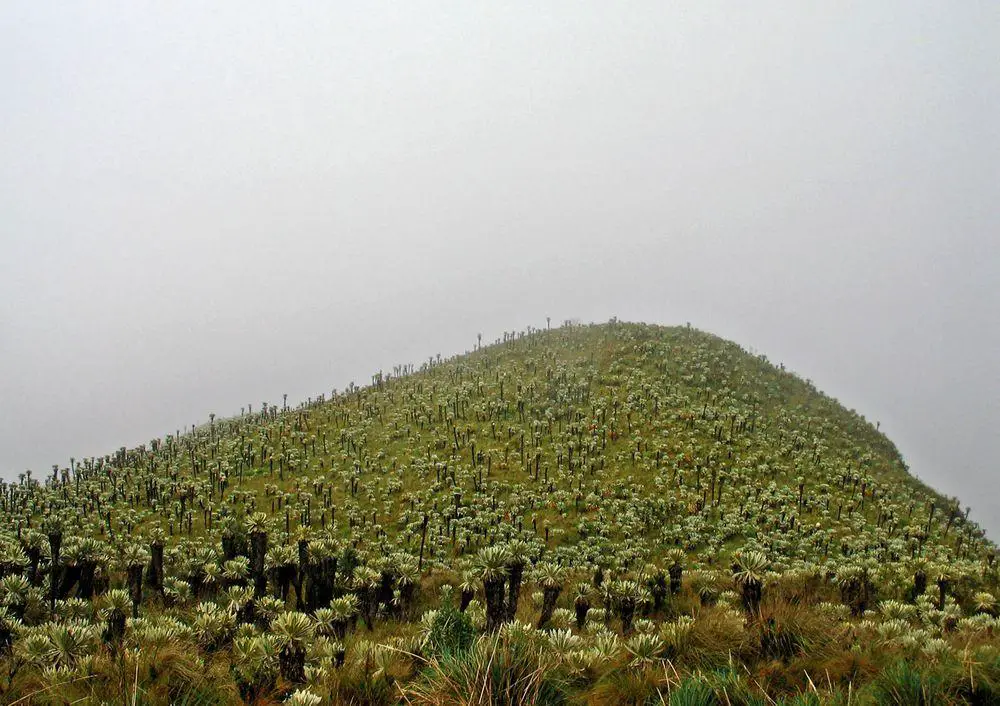
Espeletia pycnophylla
Espeletia pycnophylla is the most common frailejone in Ecuador. This plant has several subspecies. Two of these subspecies grow in Colombia, one – Espeletia pycnophylla ssp. llanganatensis – only in the exotic Valle de los Frailejones in the Central Ecuador.
In Páramo El Ángel grows Espeletia pycnophylla ssp. angelensis and here have formed the largest stands of this species.
This frailejone has very soft, pubescent leaves. It is flowering with numerous yellow flowers. Plant has healing properties.
Only in El Ángel these frailejones reach giantic size – they grow up to 10 m tall. This plant grows only some 2.5 cm per year – thus we can assume that the largest are 400 years old!
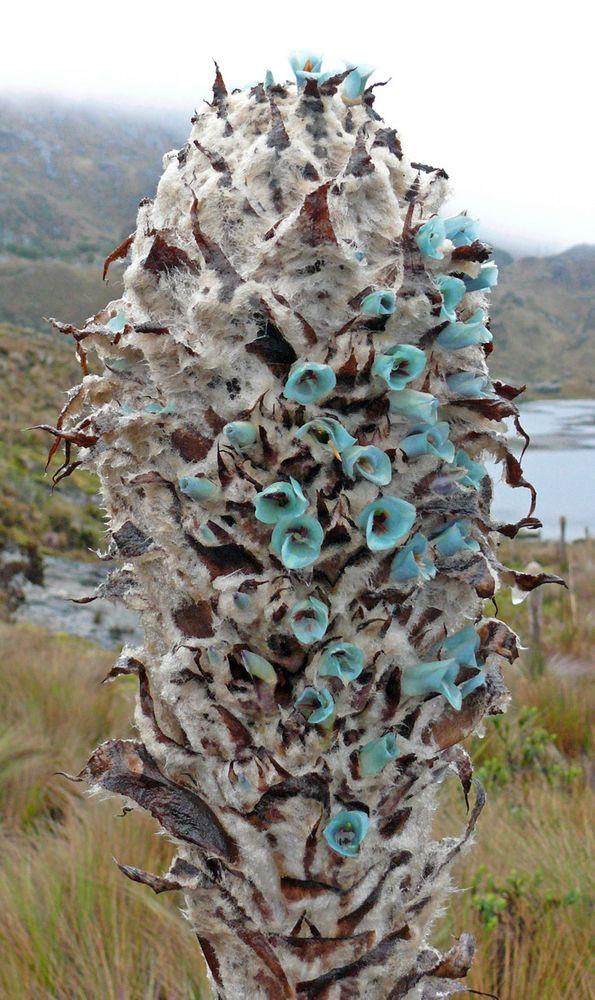
Other plants and animals
Some 250 species of plants have been found on Páramo El Ángel. Some of these plants have not been found anywhere else – such as the bromeliad Puya angelensis E.Gross & Rauh.
Puyas are the next exotic looking plants after frailejones. These bromeliads grow up to to 4 m high.
Near the park has been found the extremely rare Puya angelensis, here grows the amazing Puya clava-herculis with unusual blue flowers, Puya hamata. These plants are beloved by spectacled bear (Tremarctos ornatus), which also is met in these highlands.
On páramo are living many locally adapted species of animals, such as the rare frog Gastrotheca espeletia.
Lagunas Verdes – Green Lagoons
In the northern part of the reserve, at 3,900 m height are located three small lakes, each with a diameter of some 200 m. These lakes contain sulphur and other chemicals emitted by the springs of this volcanic region – this gives a characteristic green color to the water.
Temperature of the water is 8 ° C.
These unusual lakes together with the eerie frailejones around them create a unique sight.
Petroglyph cliff
On the western slopes of a rounded hill (Cerro Iguán) is located large stone block – Piedra Pintada de San Isidro. Several simple petroglyphs have been found here depicting simple symbols – such as the Sun, monkey and some more.
References
- Patricio Mena-Vásconez, G. Medina, La biodiversidad de los páramos en el Ecuador. Los Páramos de Ecuador. Particularidades,
Problemas y Perspectivas. 2001. Accessed in 04.03.2012. - Cristina Rivadeneira-Roura y Andrea Coloma-Santos, Reserva Ecológica El Ángel. Guía del patrimonio de áreas naturales protegidas del Ecuador. 2007.
 Linked articles
Linked articles
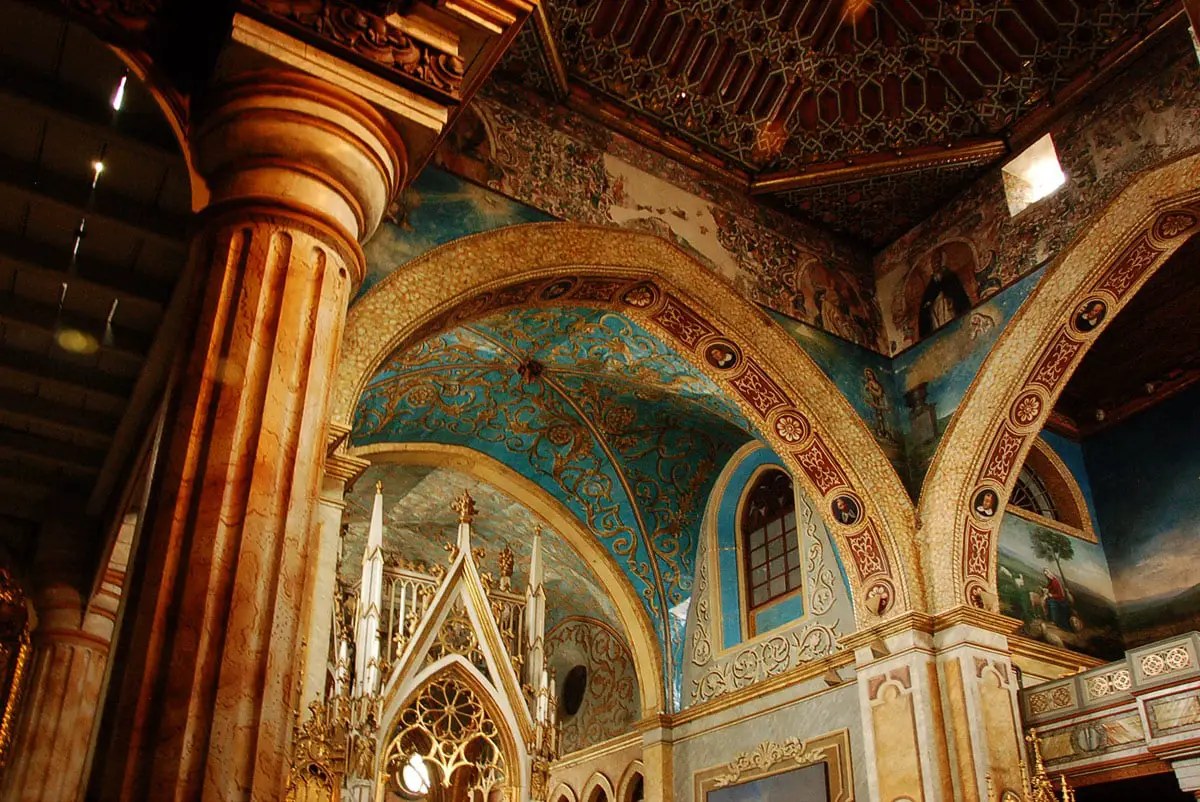
Wonders of Ecuador
Although Ecuador is somewhat smaller than its neighbors, the country nevertheless has a very diverse landscape and high diversity of cultural and natural landmarks. The highlights of Ecuador are Late Renaissance and Baroque architecture, historical cities, biological diversity, and numerous exciting archaeological landmarks.
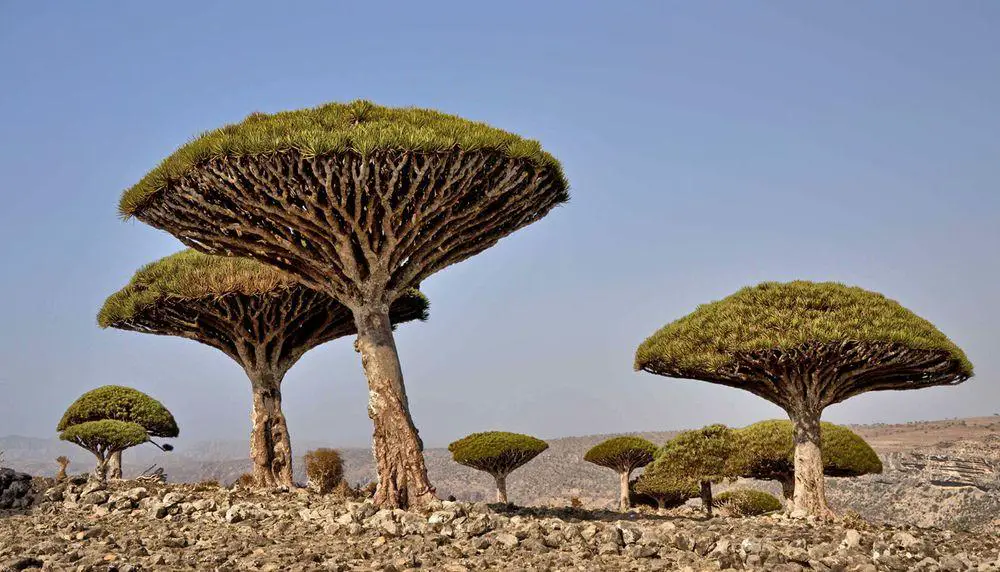
Ecosystems
Biotope is a rather small area with uniform environmental conditions and a specific community of life. Wondermondo describes biotopes and ecosystems which have striking looks, look very beautiful, or have other unusual characteristics.
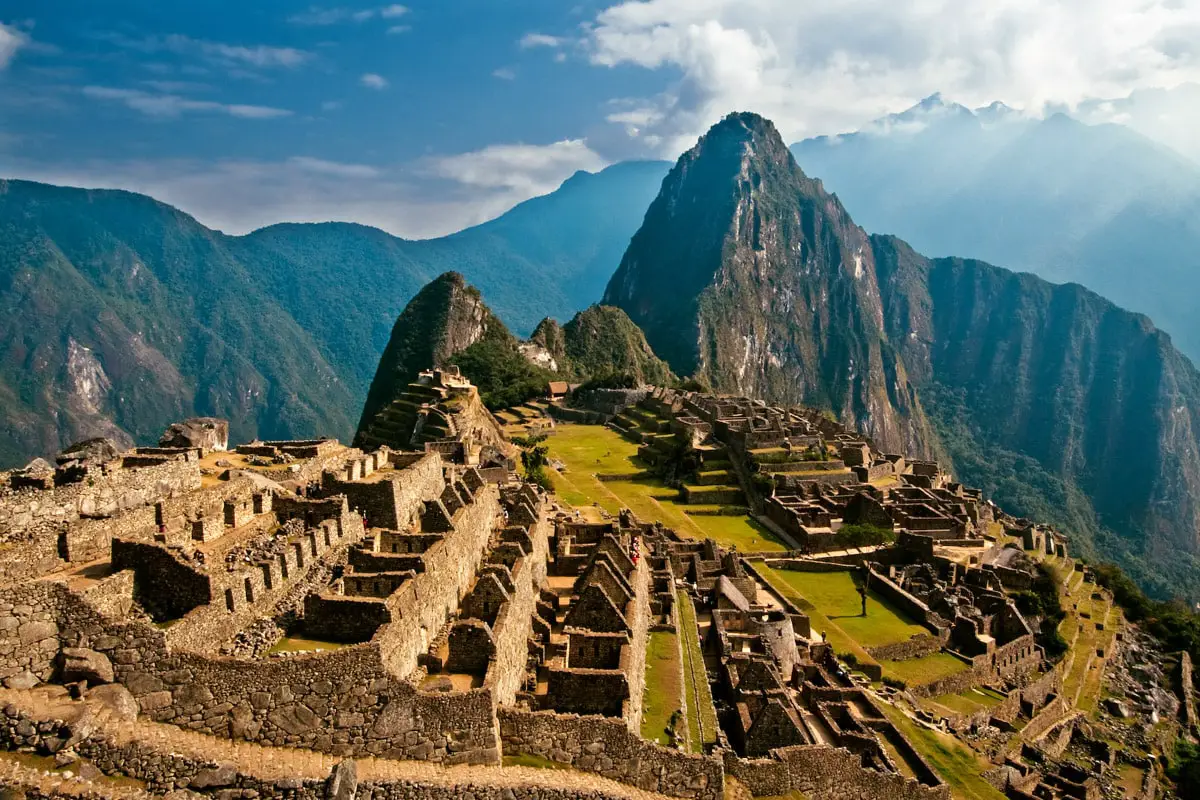
Wonders of South America
There is little doubt – South America is one of the most spectacular… maybe the most spectacular continent of the world.
There is located the second-highest mountain chain in the world, the largest rainforest, the tallest volcanoes, and the tallest and largest waterfalls. The highest biological diversity in the world is reached somewhere near the eastern ranges of the Andes in Ecuador, Peru, or Colombia.
 Recommended books
Recommended books
The Great Guide Andes
The Great Guide to the Andes is a unique bilingual English – Spanish guide featuring 16 of the best places for Hiking, Trekking, Climbing, and other outdoor activities in the Ecuadorian highlands; among them, you will find 10 main peaks, 5 lagoons, and Ecuador’s best rock climbing site. Inside this guide, you’ll find full-color pictures along with fast facts, general descriptions, and information on how to get to each place from the closest main city; besides, you can learn about hikes and trails suggestions among other important and interesting information on the 16 best places for hiking and climbing in the Ecuadorian Andes.
Our House in the Clouds: Building a Second Life in the Andes of Ecuador
While many baby boomers are downsizing to a simpler retirement lifestyle, photographer and writer Judy Blankenship and her husband Michael Jenkins took a more challenging leap in deciding to build a house on the side of a mountain in southern Ecuador. They now live half the year in Cañar, an indigenous community they came to know in the early nineties when Blankenship taught photography there. They are the only extranjeros (outsiders) in this homely, chilly town at 10,100 feet, where every afternoon a spectacular mass of clouds rolls up from the river valley below and envelopes the town.


